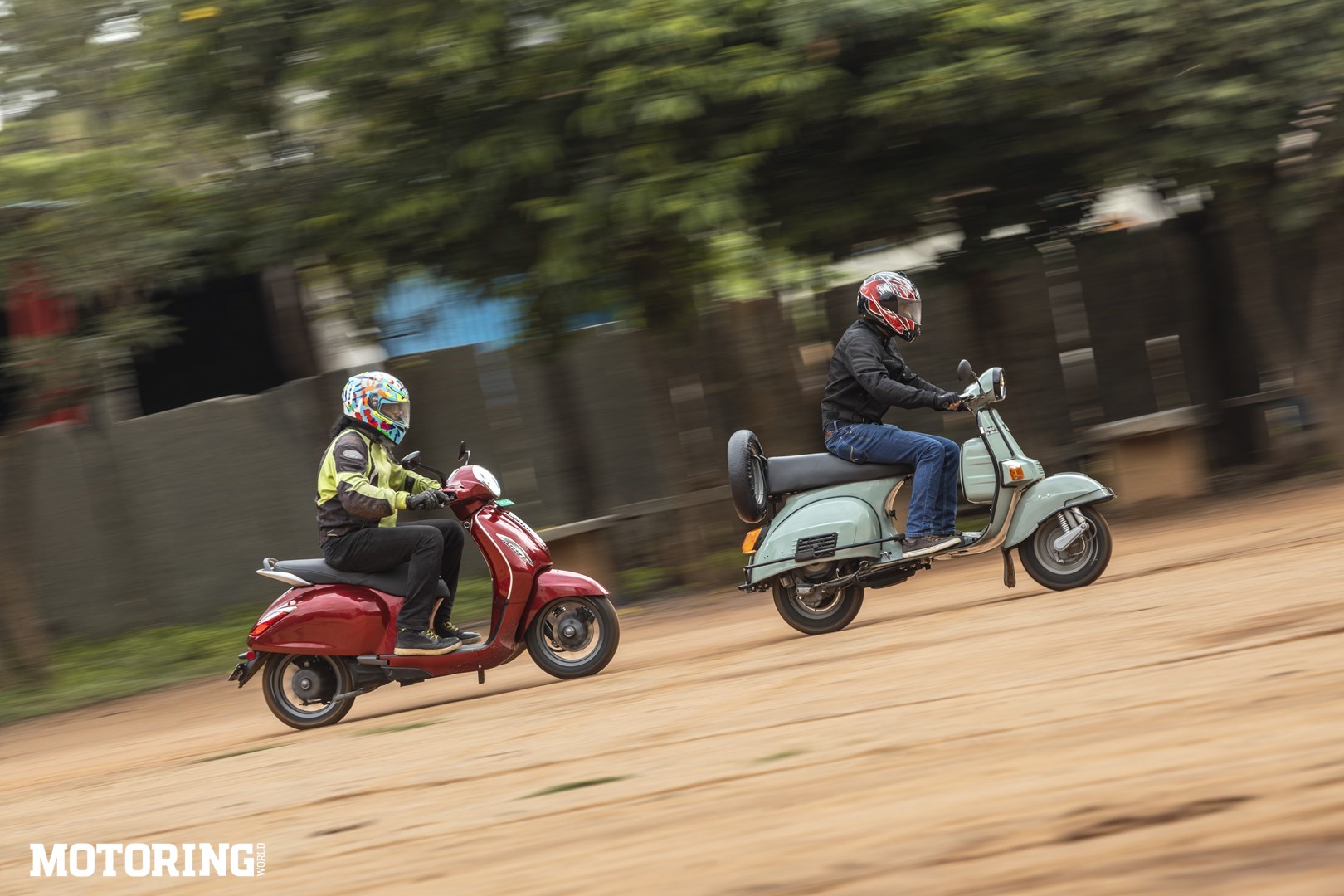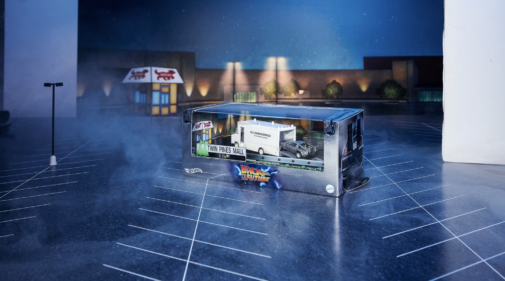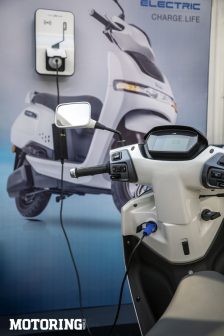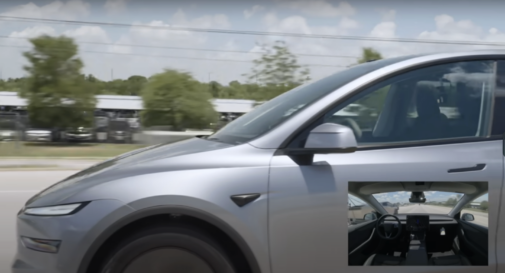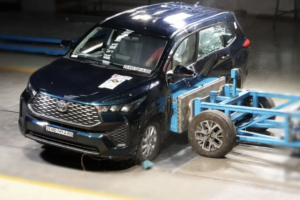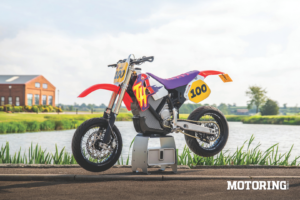Today, scooters are the most convenient way of commuting. However, this wasn’t the case a few years ago. Remember the days of geared scooters? The ones that had gear-changing mechanisms on the left side of the handlebar, foot-operated rear brakes, weights biased on their right sides, and split-seat setups? In more than half the cases, the front brake was non-existent, too, but they were extremely dependable, rarely ever broke down, saved you a lot of fuel, and sometimes even proved to be fun to ride, although that depends on how you define fun and how many times you prayed before leaving the house on one of them.
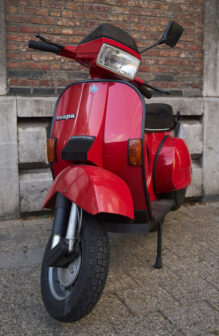
My first two-wheeler was an LML Select II handed down to me via my father at a rather young age. It was a necessity, though, since we lived in a small city called Dehradun, and our area was not well-connected by public transport at the time. Meanwhile, my dad wanted something newer, so he went ahead and got himself a 1989 Bajaj Chetak.
Confused? Well, you shouldn’t be, because the Chetak actually felt a lot more comfier than my Select ever did. Truth be told, I used to look for reasons and opportunities to sneak out on the Chetak, which would leave my dad in a bad mood for the rest of the day. While the LML would inform my back and my body of every bump and pothole on broken patches, the Chetak would simply glide through and keep me as comfortable as possible. Or at least I hope it was so — nostalgia can make one look at things rather… differently, for lack of a better word.
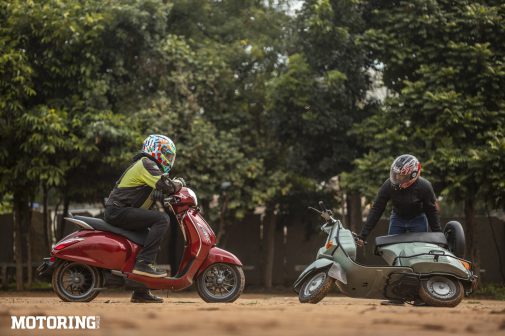
There are some things in life that stay with you forever. For example, every day at 4:00 PM, before leaving for tuitions, I followed the infamous ritual of tilting the scooter in order to get the oil flowing. I’d give the scooter a maximum of two or three kicks to get it going — unless something was really wrong and it didn’t start. In the latter case, I was obliged to ask someone to help me push-start the scooter. This usually resulted in a thick billow of bluish-white smoke engulfing me while I revved it, the air exposed to two-stroke magic!
The weight bias was something I eventually got accustomed to, but it was more like working with it rather than against it. That hand-operated gear shift — each change felt truly authentic, accompanied by a ‘tuck’ sound. Of course, it wasn’t easy to master at all, but I felt a sense of accomplishment — the fact that my wrist became a sixth-sensed gear-position indicator felt like a high. Although, even then, there were moments when I missed a gear, and I am thankful it did not happen while shifting to neutral, trying to coast down an inclined road in an attempt to save even more fuel.
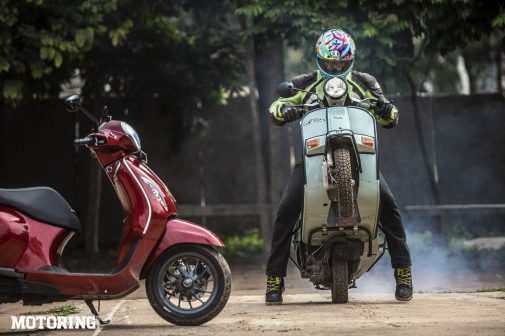
The Select’s seat height was somehow suited to me. However, in the Chetak’s case, the split seat, even in its lowest height, was rather tall. I liked challenging (read embarrassing) myself so I used to try and kick-start the scooter while sitting on it, which resulted in some moments which I am glad were seen by nobody I knew. Thankfully, I eventually grew tall enough to tackle that, and I even learnt that trick of uncles getting the scooter off the main-stand by shifting into first. Can your modern scooters do that?
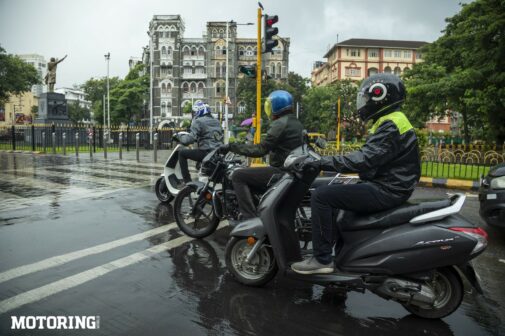
These scooters were far from what you’d call ‘convenient’ by today’s standards, but they were durable for sure. They also took almost everything that was thrown at them. That’s not to say modern scooters can’t do all that. It’s just that, especially ever since the Kinetic Honda and the TVS Scooty came along, the definition of a ‘scooter’ changed. Then the Activa came along and redefined the game altogether. Scooters began featuring a self-starter, then a modern four-stroke engine with lesser sound and no smoke, telescopic forks at the front, a usable front brake, working turn-indicators, eventually morphing into today’s Ntorqs and Jupiters with digital clusters, bluetooth connectivity and whatnot.
And now we have electrics breathing down the neck of the combustion engine’s future. The old habit of tilting the scooter is replaced by a self-starter — just thumb the button, hear the scooter start up (or not, in an EV’s case), and off you go. Twist the accelerator and press the brakes. Gear shifting, an unspoken rite of passage, suddenly disappeared and was replaced by the convenience of a CVT. It certainly has its benefits when you need to get from point A to point B, but then hasn’t the world moved on and become too fast-paced in general?
As my friend and colleague, Keshav, remarked, ‘The luxury of slowing down and savouring everything is a luxury not everyone can afford.’ Despite all their quirks and idiosyncrasies, geared scooters left a mark on those who experienced them. A ride on these scooters was not just a mere commute, but a collection of tales waiting to be told. And if you have one of these scooters, hold on to them, because today you are among the few who have the luxury of slowing down and savouring life!





